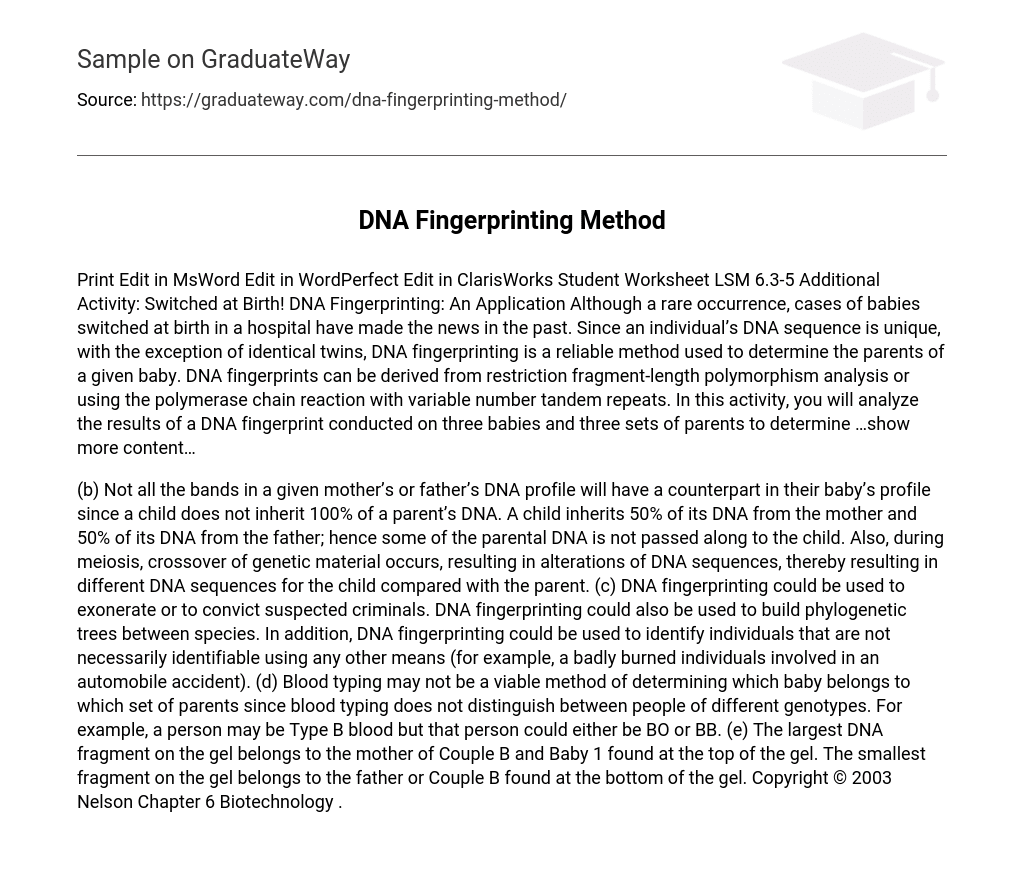Although a rare occurrence, cases of babies switched at birth in a hospital have made the news in the past. Since an individual’s DNA sequence is unique, with the exception of identical twins, DNA fingerprinting is a reliable method used to determine the parents of a given baby. DNA fingerprints can be derived from restriction fragment-length polymorphism analysis or using the polymerase chain reaction with variable number tandem repeats. In this activity, you will analyze the results of a DNA fingerprint conducted on three babies and three sets of parents to determine.
Not all the bands in a given mother’s or father’s DNA profile will have a counterpart in their baby’s profile since a child does not inherit 100% of a parent’s DNA. A child inherits 50% of its DNA from the mother and 50% of its DNA from the father; hence some of the parental DNA is not passed along to the child. Also, during meiosis, crossover of genetic material occurs, resulting in alterations of DNA sequences, thereby resulting in different DNA sequences for the child compared with the parent.
DNA fingerprinting could be used to exonerate or to convict suspected criminals. DNA fingerprinting could also be used to build phylogenetic trees between species. In addition, DNA fingerprinting could be used to identify individuals that are not necessarily identifiable using any other means (for example, a badly burned individuals involved in an automobile accident).
Blood typing may not be a viable method of determining which baby belongs to which set of parents since blood typing does not distinguish between people of different genotypes. For example, a person may be Type B blood but that person could either be BO or BB.
The largest DNA fragment on the gel belongs to the mother of Couple B and Baby 1 found at the top of the gel. The smallest fragment on the gel belongs to the father or Couple B found at the bottom of the gel.





